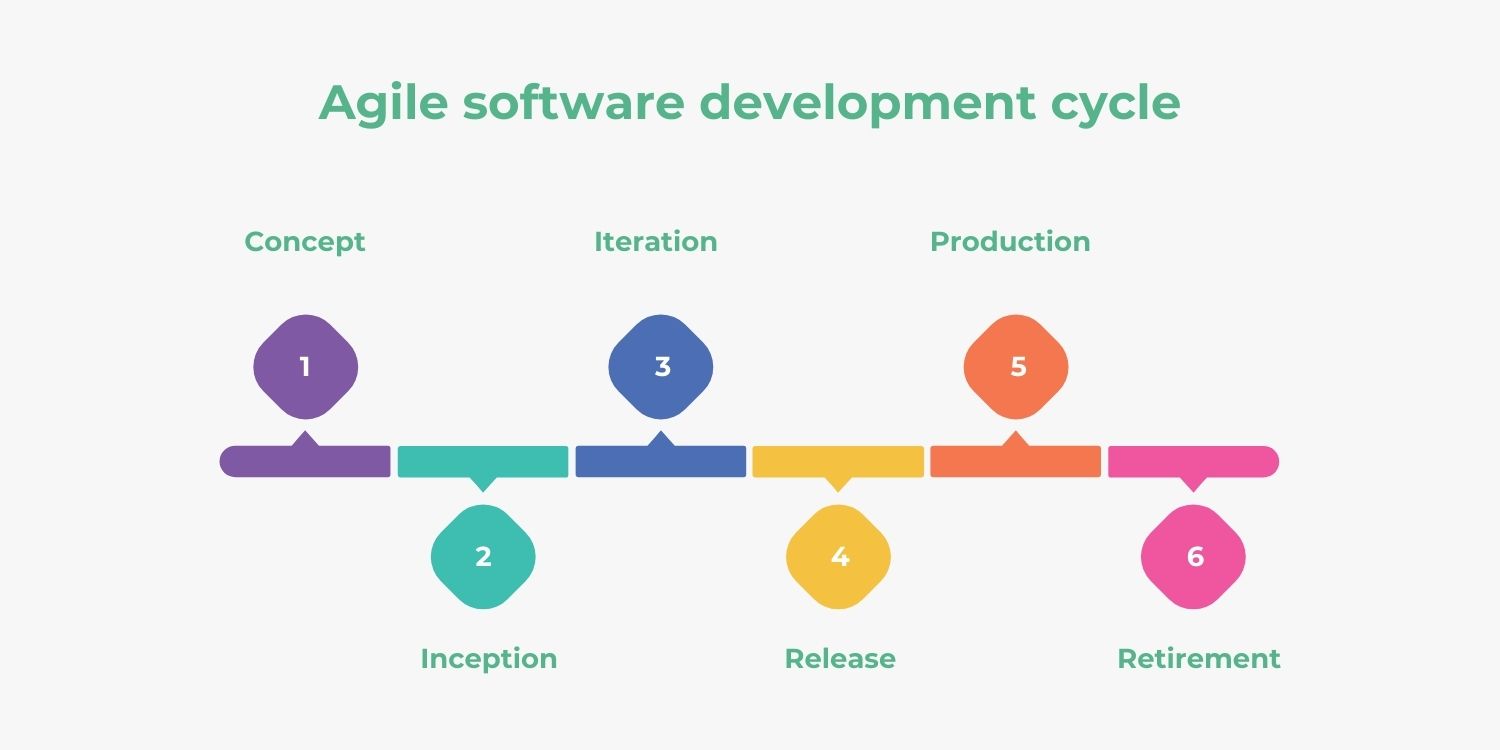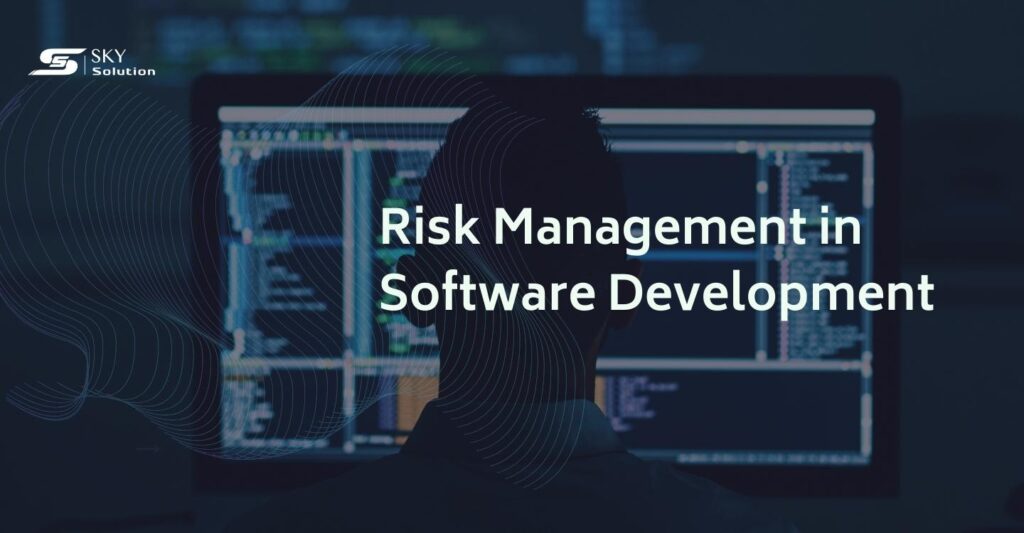Risk management in software development is a crucial process that helps teams identify, assess, and prioritize risks that could negatively impact a project. With the complexity of software projects increasing, effective risk management becomes even more important to ensure the successful delivery of software products. This involves understanding potential issues and employing strategies to mitigate them, ultimately leading to higher quality software and more satisfied stakeholders.
What is Risk Management in Software Development?
Risk management in software development is the systematic process of identifying, analyzing, and addressing potential threats that could impact a project’s success. It involves proactively anticipating problems, minimizing their effects, and ensuring the project stays on track to meet its objectives.
Effective risk management in software development typically includes five key steps:
- Risk Identification: Identify potential risks that could impact the project. This step involves systematically detecting challenges such as technical issues, resource limitations, or external factors that might disrupt progress.
- Risk Analysis: Assess the likelihood and potential impact of each identified risk. This helps determine which risks pose the most significant threat to the project’s success.
- Risk Evaluation: Evaluate and prioritize risks based on their alignment with project goals and business objectives. This ensures that critical risks are addressed promptly and effectively.
- Risk Response Planning: Develop strategies to manage each risk. These strategies may include mitigation, acceptance, or contingency planning, depending on the risk’s nature and severity.
- Risk Monitoring: Continuously monitor identified risks and remain alert to new ones. This step ensures that risk management strategies are updated as project circumstances change, maintaining control over potential threats.
Also read: 11 Benefits of Risk Management: Vital for Business Success
Types of Risk in Software Development
In the realm of software development, there are several types of risk practices that teams can adopt:
- Schedule Risks:
Schedule risks are time-related challenges that arise during project delivery and planning. These risks can disrupt development timelines, leading to delays and project failure, ultimately affecting the organization’s economy.
Causes of Schedule Risks:
- Inaccurate time estimation
- Improper resource allocation
- Inefficient tracking of resources (e.g., systems, skills, staff)
- Frequent expansion of project scope
Failure to identify and complete key functions
- Budget Risks
Budget risks involve financial issues, primarily due to budget overruns. Mismanagement of financial resources can hinder project success and lead to failure. Proper budgeting and financial tracking are essential to mitigate these risks.
Causes of Budget Risks:
- Incorrect budget estimation
- Unexpected project scope expansion
- Mismanagement of funds
- Cost overruns
- Lack of proper budget tracking
- Operational Risks
Operational risks arise from procedural inefficiencies during daily project activities. These risks often result from inadequate planning or external factors impacting operations.
Causes of Operational Risks:
- Insufficient resources
- Conflicts between tasks and team members
- Poor task management
- Lack of proper project planning
- Limited skilled personnel
- Communication and cooperation gaps
- Unclear roles and responsibilities
- Inadequate training
- Technical Risks
Technical risks relate to functionality and performance issues within the software product. These risks can result in non-functional or underperforming deliverables.
Causes of Technical Risks:
- Frequent changes in requirements
- Limited adoption of advanced technologies
- Lack of skilled employees
- High implementation complexity
- Poor integration of software modules
- Program Risks
Programmatic risks are external and often unavoidable factors that affect project progress. These risks originate from outside the organization and are beyond direct control.
Causes of Programmatic Risks:
- Rapid market changes
- Insufficient or depleted funding
- Changes in government policies or regulations
- Loss of key contracts
Other risks associated with software development:
- Communication Risks: Inadequate or ineffective communication can lead to misunderstandings, errors, and confusion, impacting the project’s progress.
- Security Risks: These involve vulnerabilities that compromise the privacy, reliability, or accessibility of the software, becoming increasingly common in today’s digital landscape.
- Quality Risks: Quality risks refer to the delivery of a product that fails to meet user satisfaction or established criteria, potentially harming the end-user experience.
- Legal and Compliance Risks: Overlooking legal requirements or regulations during project development can result in penalties, legal disputes, or operational disruptions.
- Cost Risks: Unexpected costs, changes in project scope, or budget mismanagement can derail the financial plan, causing significant setbacks.
- Market Risks: Rapidly evolving technology trends, new competitors, or shifts in customer needs can reduce a product’s market effectiveness.
Importance of Risk Management in Software Development
- Cost Reduction
Risk management helps prevent unexpected delays and additional costs by proactively identifying potential risks that could disrupt the development process. Addressing risks early minimizes budget overruns, ensuring projects remain financially viable.
- Appropriate Resource Allocation
By anticipating risks, teams can focus their efforts on areas requiring the most attention, optimizing resource allocation. This reduces resource wastage and avoids interruptions that could halt progress.
- A More Productive Process
Proactively managing risks ensures a smoother development workflow. By dealing with potential threats early, teams can avoid disruptions that might otherwise derail the project. Integrating risk management strategies with workflow automation further enhances productivity, allowing teams to identify and mitigate issues before they escalate.
- Improved Risk Identification
Risk management enhances the ability to foresee potential issues at every stage of development. By analyzing historical data and conducting thorough evaluations, teams can identify and address risks like scope creep or unrealistic deadlines, minimizing their impact.
- Enhanced Compliance
Compliance with legal and industry standards is essential for software development. Risk management ensures adherence to software license requirements and regulatory guidelines, reducing the likelihood of penalties or the need for rework due to non-compliance.
- Enhanced Customer Satisfaction
Effective risk management results in fewer software bugs and a smoother user experience. This leads to higher customer satisfaction, better user retention, and improved business outcomes as satisfied customers are more likely to remain loyal.
9 Strategies to Mitigate Risk in Software Development
Managing risks in software development is essential to ensure a smooth, efficient, and successful project. Here are some actionable tips to help you mitigate risks effectively:
- Identify and Classify Risks
Use a systematic approach to identify and classify risks, such as technical, operational, or resource-based risks. Assign responsibility within the team for each category to ensure no single individual bears the entire burden of risk management.
- Conduct Risk Assessment
Prioritize risks based on their likelihood of occurrence and potential impact on the project. Focus your resources on addressing the most critical risks to ensure efficient risk mitigation without overextending your efforts.
- Develop a Risk Management Plan
Document a comprehensive plan detailing how to handle identified risks. Share it with relevant stakeholders, including developers and quality assurance teams, to ensure everyone understands the procedures. Regularly review and update the plan to adapt to new risks and incorporate lessons learned.
- Deal with Technical Risks Early
Address technical risks proactively by incorporating robust software testing and quality assurance practices. Identifying and resolving issues before deployment minimizes post-launch complications, enhances user satisfaction, and ensures software reliability.
- Ensure Frequent Communication
Encourage open dialogue within the team to promote awareness of potential risks. Regular discussions about risk management strategies and project updates foster a collaborative environment that helps identify and mitigate risks early. Effective stakeholder engagement ensures alignment and proactive solutions.
- Continually Monitor Progress
Risk management is an ongoing process. Use regular check-ins, reports, and progress reviews to monitor project risks continuously. This approach allows you to adjust plans dynamically and mitigate risks before they escalate.
- Adopt Agile Methodology
The agile methodology breaks down projects into smaller iterations, or sprints, making it easier to identify and address risks incrementally. Incorporate risk assessments into sprint reviews and daily stand-ups to maintain flexibility and adaptability throughout the development cycle.

- Solidify Your Security Architecture
Collaborate with your cybersecurity team to integrate risk mitigation into the software’s security architecture. Addressing security risks during development, rather than post-launch, ensures a more secure and resilient software ecosystem.
- Emphasize Change Management
Anticipate and manage changes effectively by involving stakeholders and updating the risk management plan accordingly. Proper change management ensures that adjustments in project scope or requirements do not introduce unforeseen risks.
The Future of Risk Management in Software Development
The future of risk management in software development is set to become smarter, faster, and more proactive, leveraging advanced technologies and practices to enhance project success.
- AI and Machine Learning (AI/ML)
AI/ML will revolutionize risk management by analyzing data from past projects to identify patterns and predict potential issues early. This proactive approach allows teams to implement preventive measures, minimizing disruptions and costly delays.
- Automation and Integration
Automation will handle repetitive risk assessment tasks, enabling developers to focus on innovative problem-solving. Risk management tools will seamlessly integrate into development workflows, delivering real-time insights without interrupting the process.
- Continuous Feedback and Improvement
Risk management will evolve into a continuous, adaptive process. Feedback loops will provide valuable lessons from both successes and setbacks, helping teams refine their strategies and better prepare for future challenges.
- Security at the Forefront
With increasing software complexity, security risks are a growing concern. The future will see a stronger emphasis on embedding security into every stage of development. Risk management will play a pivotal role in identifying and addressing vulnerabilities early.
Conclusion
Risk management in software development is essential for achieving successful project outcomes. By understanding various types of risk management, integrating risk strategies with project management, engaging stakeholders, and implementing thorough monitoring processes, teams can navigate the complexities of software development. A strong focus on risk management not only increases the likelihood of delivering high-quality software but also fosters a proactive culture within development teams. Engaging stakeholders and employing tools for effective monitoring and evaluation are critical for sustaining successful risk management practices. Remember, the earlier risks are identified and addressed, the better the chances for a successful project outcome.
For more information on Engineering Leadership News, check out the resources here.

